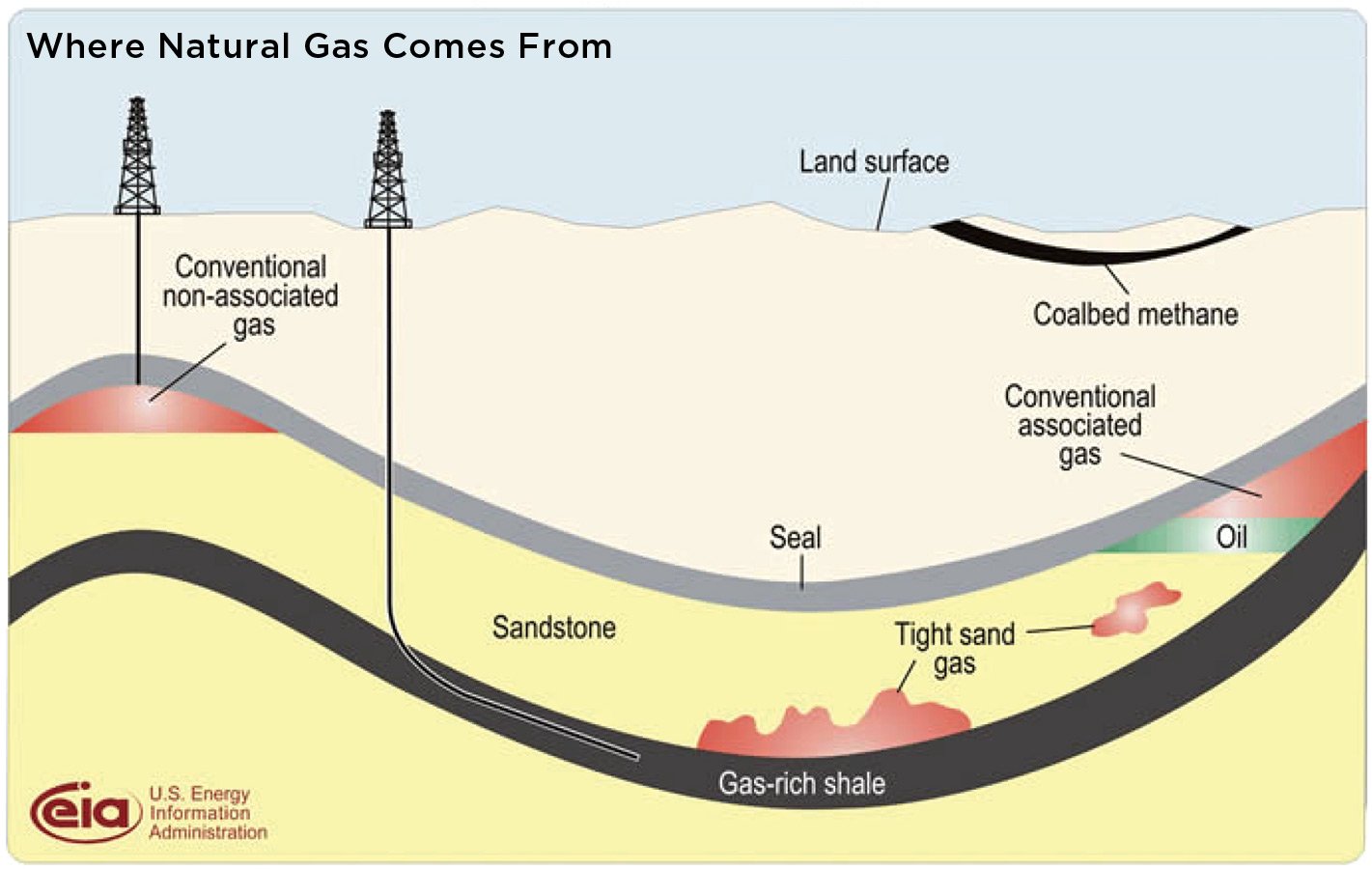How Natural Gas Is Formed
Like oil, natural gas is a product of decomposed organic matter, typically from ancient marine microorganisms, deposited over the past 550 million years.
This organic material mixed with mud, silt, and sand on the sea floor, gradually becoming buried over time. Sealed off in an oxygen-free environment and exposed to increasing amounts of heat and pressure, the organic matter underwent a thermal breakdown process that converted it into hydrocarbons.
The lightest of these hydrocarbons exist in the gaseous state under normal conditions and are known collectively as natural gas. In its pure form, natural gas is a colorless, odorless gas composed primarily of methane. Methane, the simplest and lightest hydrocarbon, is a highly flammable compound consisting of one carbon atom surrounded by four hydrogen atoms (chemical formula: CH4).
After natural gas forms, it will tend to rise towards the surface through pore spaces in the rock because of its low density compared to the surrounding rock. Most of the natural gas deposits we find today occur where the gas happened to migrate into a highly porous and permeable rock underneath an impervious cap rock layer, thus becoming trapped before it could reach the surface and escape into the atmosphere.Once natural gas forms, its fate depends on two critical characteristics of the surrounding rock: porosity and permeability. Porosity refers to the amount of empty space contained within the grains of a rock. Highly porous rocks, such as sandstones, typically have porosities of 5 percent to 25 percent, giving them large amounts of space to store fluids such as oil, water, and gas. Permeability is a measure of the degree to which the pore spaces in a rock are interconnected. A highly permeable rock will permit gas and liquids to flow easily through the rock, while a low-permeability rock will not allow fluids to pass through.

There are two general categories of natural gas deposits: conventional and unconventional. Conventional natural gas deposits are commonly found in association with oil reservoirs, with the gas either mixed with the oil or buoyantly floating on top, while unconventional deposits include sources like shale gas, tight gas sandstone, and coalbed methane.

No comments:
Post a Comment